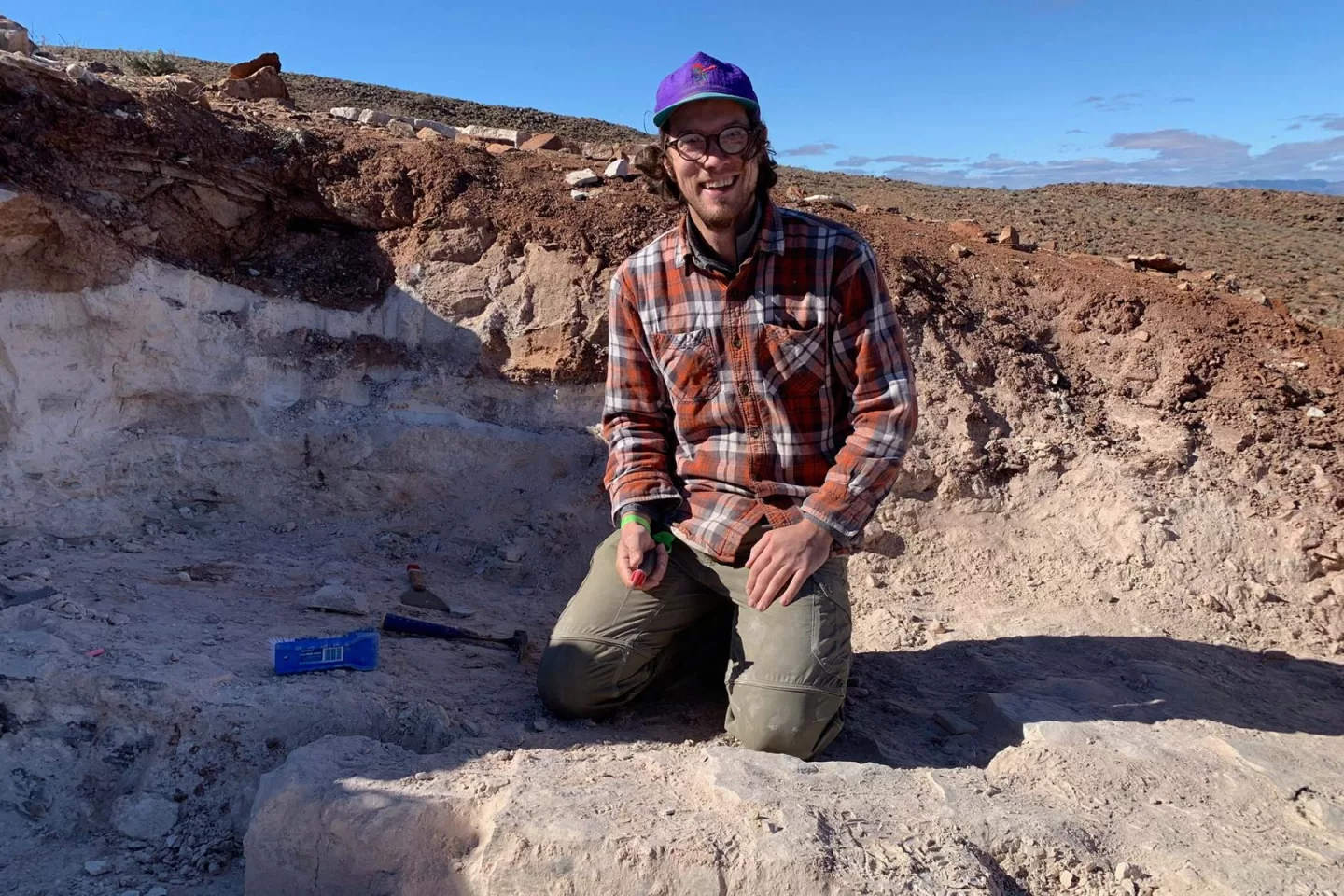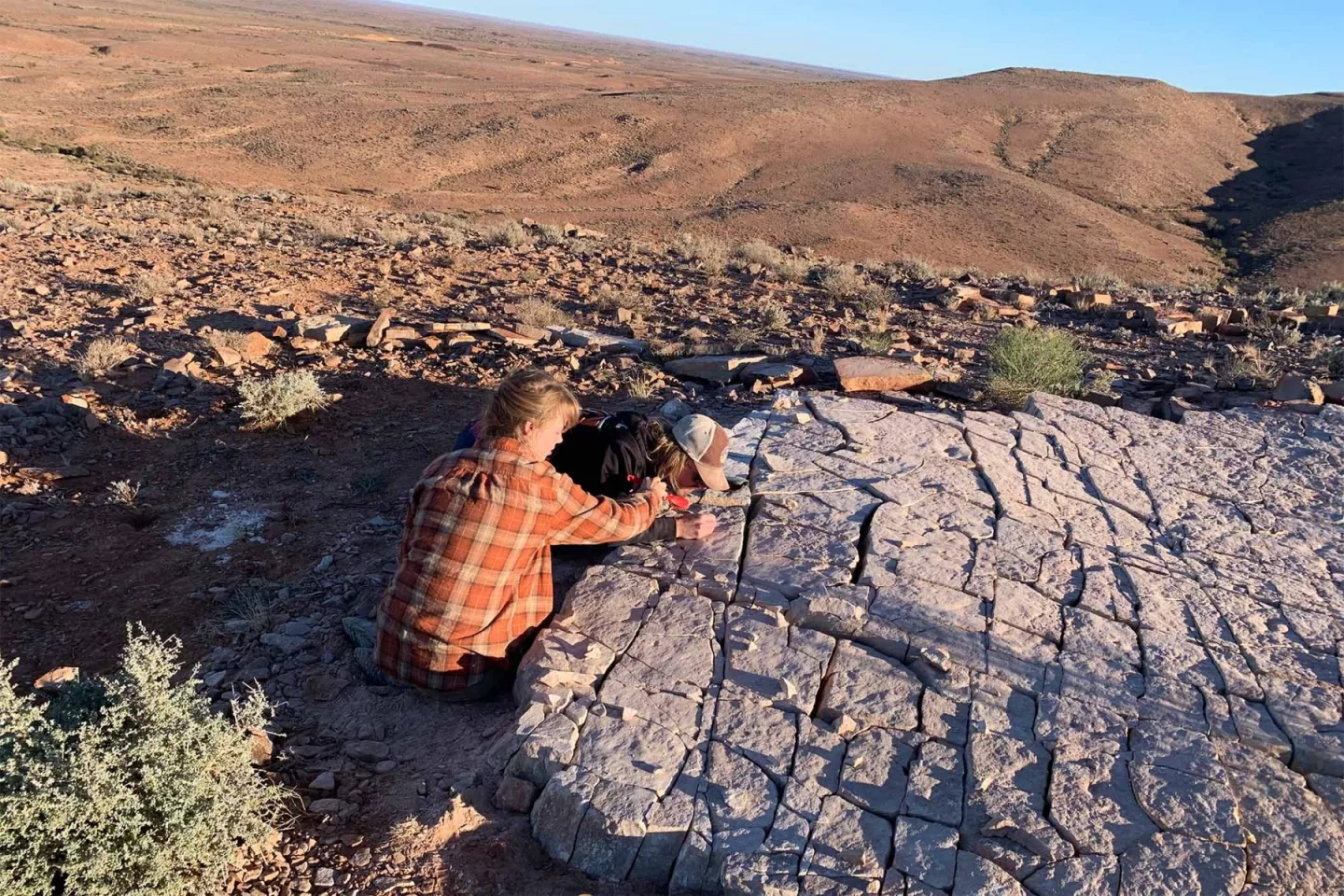A surprise discovery in a remote Australian desert region has given us new clues into the evolution of complex animal life, dating back more than 500 million years. The numerous fossils of the animal now known as Quaestio simpsonorum also show clear left-right asymmetry, concrete evidence of when complex lifeforms took shape on Earth.
This fossil find is significant, as the preservation of soft-bodied marine animals from the Ediacaran period – which spanned 635 to 538 million years ago – is incredibly rare, and of the 100 or so species we know of, this mobile, round marine animal confirms the evolution of bilateral symmetry, which is a hallmark of most flora and fauna that exists on the planet today.
“The animal is a little smaller than the size of your palm and has a question-mark shape in the middle of its body that distinguishes between the left and right side,” said Scott Evans, assistant professor of geology at Florida State University. “There aren’t other fossils from this time that have shown this type of organization so definitively. This is especially interesting as this is also one of the first animals that was capable of moving on its own.”
Resembling a small underwater Roomba vacuum, Q. simpsonorum is believed to have hovered across the seafloor, hoovering up microscopic algae and bacteria. This foraging was also evident in the fossils found at an excavation site in the Nilpena Ediacara National Park, in South Australia. Now a barren, bare desert environment, it was once an ocean thriving with early animal life, constrained to the environment due to the hostile low-oxygen atmosphere of the planet above water.

“One of the most exciting moments when excavating the bed where we found many Quaestio was when we flipped over a rock, brushed it off, and spotted what was obviously a trace fossil behind a Quaestio specimen – a clear sign that the organism was motile; it could move,” said researcher Ian Hughes, a Harvard University organismic and evolutionary biology graduate student.
While we know of many Ediacaran species, this little sea vacuum is a significant find – because, unlike the others, its ridged back with a question-mark-like indent detailed clear left and right sides. Bilateral symmetry is the predominant trait of Earth's extant species, which provides a timeline of evolution from more than half a billion years ago to the present day.
“What is really exciting about this fossil is that it’s basically bilaterally symmetrical, which means its right side mirrors its left side, but then it has an asymmetrical element that forms the shape of a backwards question mark,” said researcher Mary Droser, a professor at the University of California. “This sort of symmetry indicates a certain level of genetic complexity. Humans are bilaterally symmetrical but have a number of asymmetries, for example the location of the heart and appendix. A number of other such asymmetries are found throughout the animal kingdom - this appears to be one of the first organisms to organise itself in that way.”
The site where the fossils were found, now a national park, is considered the world's epicenter of Ediacaran diversity and abundance.

“It’s incredibly insightful in terms of telling us about the unfolding of animal life on Earth,” Droser said. “We’re the only planet that we know of with life, so as we look to find life on other planets, we can go back in time on Earth to see how life evolved on this planet. Studying the history of life through fossils tells us how animals evolve and what processes cause their extinction, be it climate change or low oxygen.”
The discovery is also an important one in terms of better understanding the role genetics has played in the evolution of simple single-celled organisms to complex animal life.
“As the oldest fossil animals, the Ediacara biota, can tell us a great deal about early developmental processes,” Evans said. “Determining the gene expressions needed to build these forms provides a new method for evaluating the mechanisms responsible for the beginnings of complex life on this planet.
"Because animals today use the same basic genetic programming to form distinct left and right sides, we can be reasonably confident those same genes were operating to produce these features in Quaestio, an animal that has been extinct for more than half-a-billion years."
The research was published in the journal Evolution & Development.
Source: Florida State University







